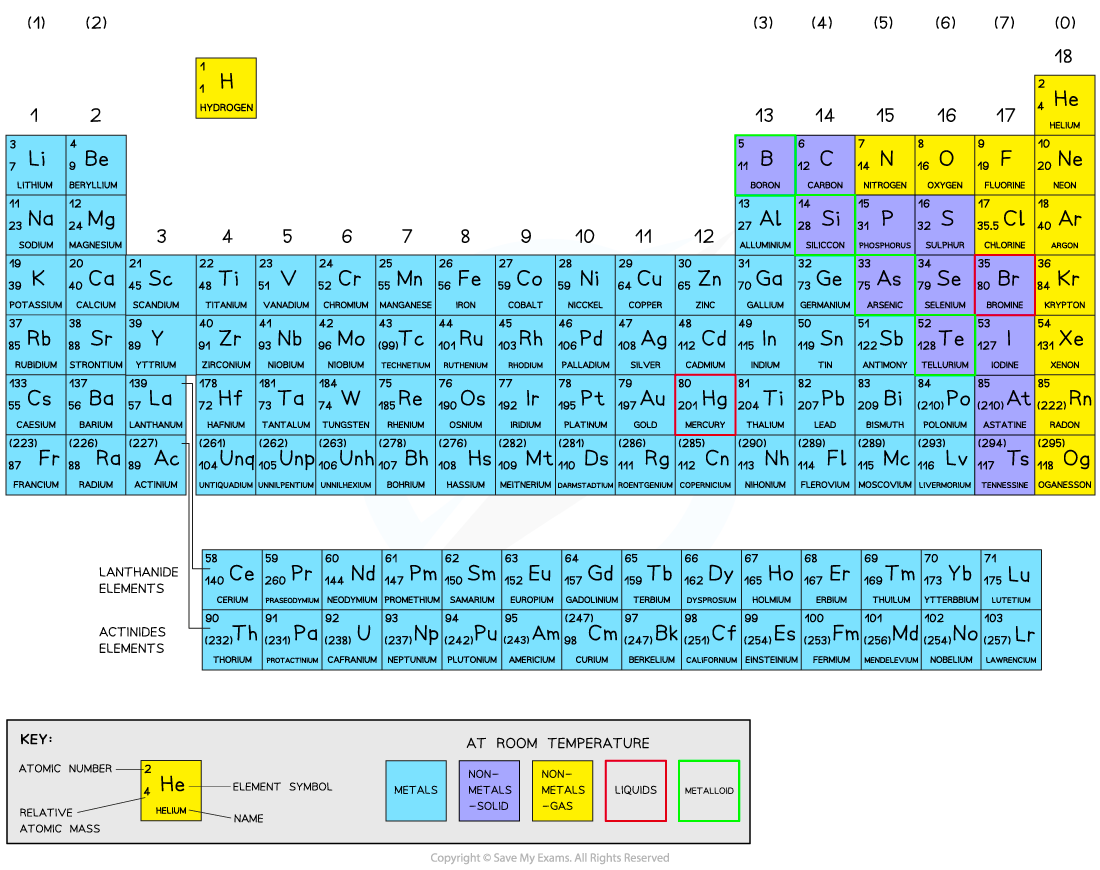The Modern Periodic Table (Edexcel GCSE Chemistry): Revision Note
Exam code: 1CH0
The Modern Periodic Table
There are over 100 chemical elements which have been isolated and identified
Elements are arranged on the periodic table in order of increasing atomic number
Each element has one proton more than the element preceding it
This is done so that elements end up in columns with other elements which have similar properties
The table is arranged in vertical columns called groups and in rows called periods
Period: These are the horizontal rows that show the number of shells of electrons an atom has and are numbered from 1 - 7
E.g. elements in period 2 have two electron shells, elements in period 3 have three electron shells
Group: These are the vertical columns that show how many outer electrons each atom has and are numbered from 1 – 7, with a final group called group 0 (instead of group 8)
E.g. group 4 elements have atoms with 4 electrons in the outermost shell, group 6 elements have atoms with 6 electrons in the outermost shell and so on
The Periodic Table

The Periodic Table of the Elements
Examiner Tips and Tricks
The atomic number is unique to each element and could be considered as an element's “fingerprint”.
The number of electrons changes during chemical reactions, but the atomic number does not change.
Metals and Non-Metals in the Periodic Table
The metals that are further to the left on the periodic table do not have many electrons to remove from their outer shells
As you descend the groups, the outer shell electrons become further away from the nucleus due to increasing atomic size
This weakens their attraction to the nucleus
The further down the group an element is, the more easily it can react and lose its outer electron(s)
For the non-metals which are placed on the right-hand side, the opposite is the case
These elements have a lot of outer electrons, and it is more feasible for them to gain (or share electrons) to obtain a full outer shell
This is a key difference between metals and non-metals and influences their chemical behaviour
It also clearly illustrates the important link between an element’s atomic number and how it reacts as well as its position on the periodic table
The general properties of most metals and non-metals are summarised below:
A summary of the General Properties of Metals & Non-metals


Unlock more, it's free!
Did this page help you?